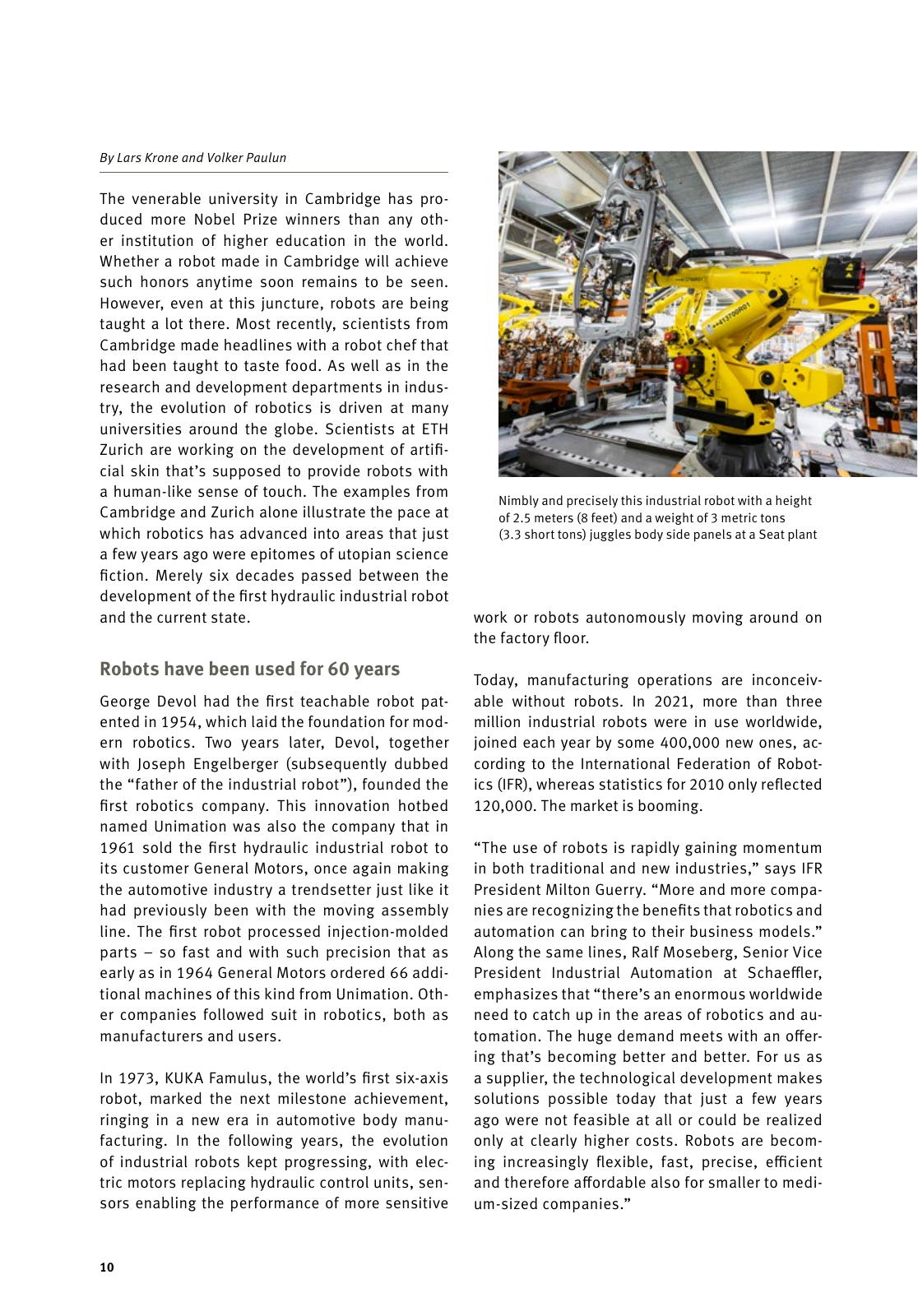Nimbly and precisely this industrial robot with a height of 2 5 meters 8 feet and a weight of 3 metric tons 3 3 short tons juggles body side panels at a Seat plant The venerable university in Cambridge has pro duced more Nobel Prize winners than any oth er institution of higher education in the world Whether a robot made in Cambridge will achieve such honors anytime soon remains to be seen However even at this juncture robots are being taught a lot there Most recently scientists from Cambridge made headlines with a robot chef that had been taught to taste food As well as in the research and development departments in indus try the evolution of robotics is driven at many universities around the globe Scientists at ETH Zurich are working on the development of artifi cial skin that s supposed to provide robots with a human like sense of touch The examples from Cambridge and Zurich alone illustrate the pace at which robotics has advanced into areas that just a few years ago were epitomes of utopian science fiction Merely six decades passed between the development of the first hydraulic industrial robot and the current state Robots have been used for 60 years George Devol had the first teachable robot pat ented in 1954 which laid the foundation for mod ern robotics Two years later Devol together with Joseph Engelberger subsequently dubbed the father of the industrial robot founded the first robotics company This innovation hotbed named Unimation was also the company that in 1961 sold the first hydraulic industrial robot to its customer General Motors once again making the automotive industry a trendsetter just like it had previously been with the moving assembly line The first robot processed injection molded parts so fast and with such precision that as early as in 1964 General Motors ordered 66 addi tional machines of this kind from Unimation Oth er companies followed suit in robotics both as manufacturers and users In 1973 KUKA Famulus the world s first six axis robot marked the next milestone achievement ringing in a new era in automotive body manu facturing In the following years the evolution of industrial robots kept progressing with elec tric motors replacing hydraulic control units sen sors enabling the performance of more sensitive By Lars Krone and Volker Paulun work or robots autonomously moving around on the factory floor Today manufacturing operations are inconceiv able without robots In 2021 more than three million industrial robots were in use worldwide joined each year by some 400 000 new ones ac cording to the International Federation of Robot ics IFR whereas statistics for 2010 only reflected 120 000 The market is booming The use of robots is rapidly gaining momentum in both traditional and new industries says IFR President Milton Guerry More and more compa nies are recognizing the benefits that robotics and automation can bring to their business models Along the same lines Ralf Moseberg Senior Vice President Industrial Automation at Schaeffler emphasizes that there s an enormous worldwide need to catch up in the areas of robotics and au tomation The huge demand meets with an offer ing that s becoming better and better For us as a supplier the technological development makes solutions possible today that just a few years ago were not feasible at all or could be realized only at clearly higher costs Robots are becom ing increasingly flexible fast precise efficient and therefore affordable also for smaller to medi um sized companies 10

Hinweis: Dies ist eine maschinenlesbare No-Flash Ansicht.
Klicken Sie hier um zur Online-Version zu gelangen.
Klicken Sie hier um zur Online-Version zu gelangen.